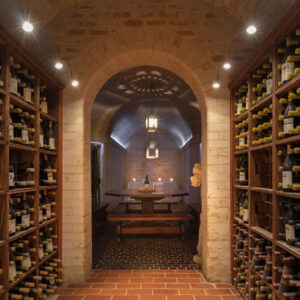
Join us at Blind Bishop for a seminar and tasting with Hans Astrom from the renowned South African winery Klein Constantia.
Blind Bishop's Mediterranean-inspired dishes will be served with the wines:
About Constantia
Constantia is a legacy wine-producing area for three centuries in Cape Town, bridging the Cape Peninsula to the mainland between the Atlantic Ocean and False Bay. The viticultural estate that formed part of Constantia was a vast property established in 1685 by Simon van der Stel, the first mayor of Cape Town. Following his death, two of the three parcels continued to make wine, primarily of the sweet style it was best known for creating.
This style reached international acclaim by the mid-1700s and was a favorite of Prussian emperor Frederick the Great, founding father John Adams, French emperor Napoléon Bonaparte, and is even mentioned in the works of writers Alexandre Dumas, Jane Austen, and Charles Dickens. While the region survived challenges such as phylloxera in the late 19th century and urban sprawl in the 20th century, it wasn’t until the 1980s when Klein Constantia revitalized this historic property and debuted the return of Vin de Constance in 1986.
About Vin de Constance
Vin de Constance uses the very floral and fruity white grape Muscat de Frontignan (Muscat Blanc à Petits Grains), grown on well-draining granite soil and cooled by the ocean breezes.
These dessert wines, unlike Sherry, Madeira, or Port, are not fortified. Similar to the passito wines of Italy, the natural sugars of the grape are concentrated by allowing some of the clusters to dry on the vine past ripeness and into raisining. The grapes are harvested by hand in multiple passes, so that ripe berries with acidity balance the concentrated dried grapes.
After the berries have been sorted by hand, they are cold macerated on the skins for up to two weeks, lightly pressed into barrels, and then fermented (which can take up to a year to complete naturally due to the high sugars). The wine is then aged on its lees in new French oak, Hungarian oak, and French acacia for at least three years before bottling.
Extremely iconic as a style as well as labor-intensive to create, these breathtaking celebrated wines are a rare treat to taste!